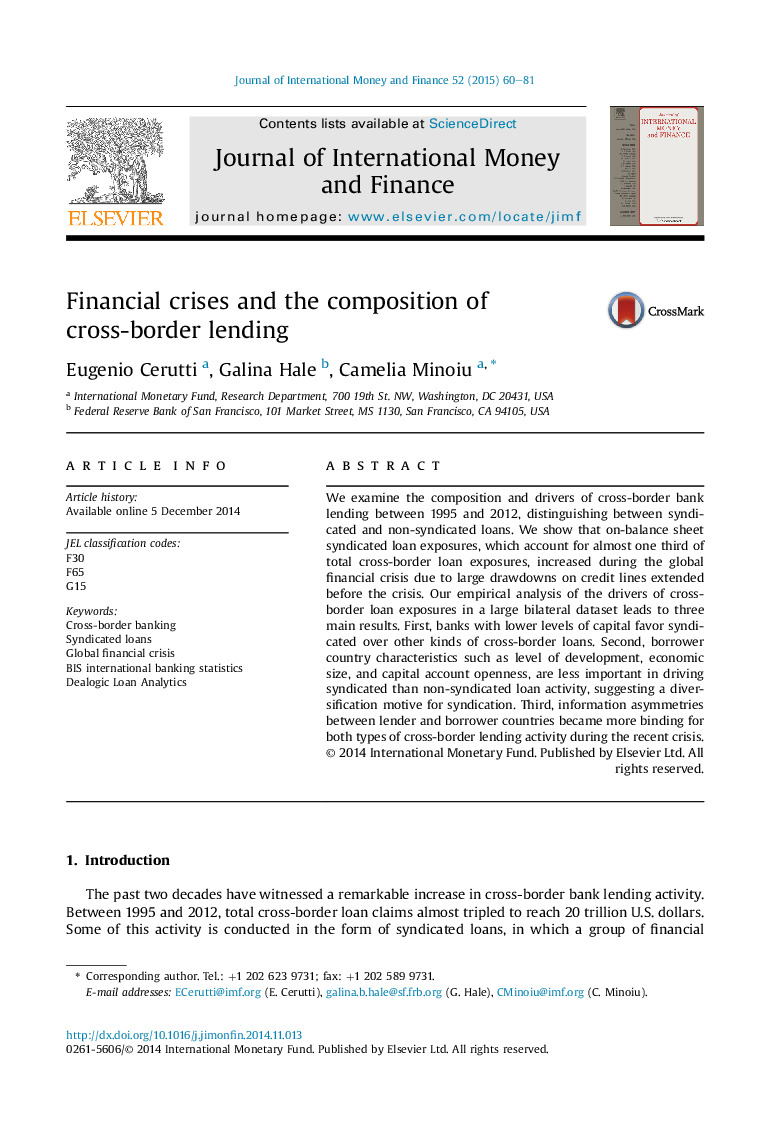| Article ID | Journal | Published Year | Pages | File Type |
|---|---|---|---|---|
| 963383 | Journal of International Money and Finance | 2015 | 22 Pages |
Abstract
We examine the composition and drivers of cross-border bank lending between 1995 and 2012, distinguishing between syndicated and non-syndicated loans. We show that on-balance sheet syndicated loan exposures, which account for almost one third of total cross-border loan exposures, increased during the global financial crisis due to large drawdowns on credit lines extended before the crisis. Our empirical analysis of the drivers of cross-border loan exposures in a large bilateral dataset leads to three main results. First, banks with lower levels of capital favor syndicated over other kinds of cross-border loans. Second, borrower country characteristics such as level of development, economic size, and capital account openness, are less important in driving syndicated than non-syndicated loan activity, suggesting a diversification motive for syndication. Third, information asymmetries between lender and borrower countries became more binding for both types of cross-border lending activity during the recent crisis.
Related Topics
Social Sciences and Humanities
Economics, Econometrics and Finance
Economics and Econometrics
Authors
Eugenio Cerutti, Galina Hale, Camelia Minoiu,
